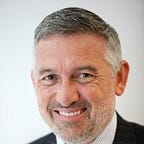Morse Micro & Main Sequence Ventures
I am excited to announce that the team at Main Sequence Ventures have co-led an investment in next generation Wi-Fi company Morse Micro alongside Pan Group Australia, a Melbourne based specialist investor.
Based at Cicada Innovations in Eveleigh, NSW, the Morse Micro team are developing a microchip to support the new IEEE 802.11ah standard; better known as “Wi-Fi HaLow”.
Wi-Fi HaLow is designed specifically to address the needs of the massive Internet of Things (IoT) market. The range will be ten times that of conventional Wi-Fi, and the power consumption a small fraction of that required for a traditional Wi-Fi chip.
Today, devices which require an internet connection beyond the reach of conventional Wi-Fi have been forced to use more costly and power hungry solutions such as cellular. With Wi-Fi HaLow these devices will be able to access the internet like any other Wi-Fi enabled device.
Morse are cramming all the circuits required for a Wi-Fi product onto one tiny silicon chip. And that is important, because in electronics, the higher the component count the higher the cost & power consumption. Morse’s chip combines the circuits required to transmit & receive radio waves, the digital circuitry required to process the radio signals and a power efficient microprocessor to run application code. Devices built using a Morse chip will be able to run for many years on a single, small coin cell battery.
Despite being a young company Morse has already manufactured its first chips and conducted HaLow interoperability trials with other silicon vendors.
The team have developed a design methodology and circuits that allow them to easily tackle other radio protocols and frequencies; such as SigFox and the 802.11af standard which utilises the radio spectrum becoming available as old analogue TV transmitters are decommissioned.
Initially Morse chips will be used for industrial and agricultural applications such as video cameras, asset trackers and sensors. We believe that eventually they will be used in our homes and cities to provide blanket coverage for all internet connections.
We first met Morse founders, Andrew Terry and Michael De Nil, earlier this year when they graduated from the Startmate accelerator. It’s not every day we meet a team where the founders open with the claim that their last project has over 1 billion devices in the field, both Michael and Andrew were key team leaders on the Broadcom Wi-Fi chips used in the world’s most popular smart phones.
It was clear to us that they had assembled an amazing team. Early recruits came from Australian Wi-Fi royalty; Radiata founder Professor Neil Weste and early employee Dr David Goodall. Radiata developed the first commercial Wi-Fi chip based on technology from CSIRO and was sold to Cisco for nearly $600m AUD in November 2000, arguably one of the most successful Australian deep tech startup exits in history.
The CSIRO Astrophysics and Radio teams have a long history of radio science invention and development.
CSIRO invented fast Wi-Fi and is acknowledged as a world leader in the radio science field with multiple global partnerships including NASA. For NASA, CSIRO manages and operates the Canberra Deep Space Communication Complex at Tidbinbilla, one of three tracking stations around the world that make up NASA’s Deep Space Network
CSIRO is the Australian design and development partner for the massive Square Kilometre Array based at the Radio-astronomy Observatory in Murchison, Western Australia.
The Square Kilometre Array, or SKA, is a next-generation radio telescope that will be vastly more sensitive than the best present-day instruments. It will give astronomers remarkable insights into the formation of the early Universe, including the emergence of the first stars, galaxies and other structures.
Consisting of thousands of antennas linked together by high bandwidth optical fibre, CSIRO has been the design and construction partner as well as the key developer of the key radio component, the high sensitivity Phased Array Feed (a type of radio camera).
CSIRO/Data61 have already helped Morse with prototyping their first demonstration circuit boards and will be engaged for testing and characterisation of the devices in their world class radio labs.
Morse are also considering implementing the secure micro-kernel operating systems and the low power indoor positioning technology produced by CSIRO research groups.
Morse has been supported and incubated in the Sydney Innovation Central workspace located at Cicada Innovations and sponsored by CSIRO/Data61 and Cisco.
Morse has also received the support of the Department of Industry, Innovation and Science with the award of a $407,000 Accelerating Commercialisation Grant.
The Morse Micro investment is a model for the types of investment that Main Sequence Ventures is aiming to make:
- amazing founders who are experts in their field
- huge growing global market
- deep tech that solves an existing or impending problem
- an opportunity where links to world class expertise in public research will turbocharge what they are doing.
They are planning to grow the team from 6 to 25 highly skilled engineers over the next 18 months and have already started bringing young PhD students into the company, with the aim of building a new deep tech communications industry ecosystem here in Australia.
The team at Main Sequence Ventures and CSIRO are super excited to be a part of the Morse Micro journey and look forward to helping them reinvent Wi-Fi right here in Sydney, the birth place of fast Wi-Fi.
